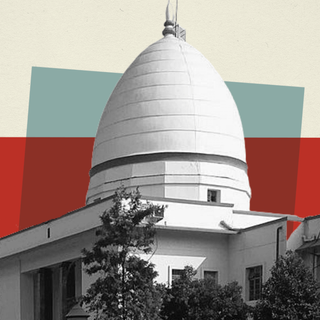The Supreme Court on Monday took note of the arbitrary use of sedition laws against media organizations, and pushed to define a framework that protects media freedom instead of “muzzling” it.
The bench, comprising Justices D.Y. Chandrachud, L. Nageshwar Rao, and S. Ravindra Bhat, was responding to a petition filed by two Telugu news channels. The Andhra Pradesh police had lodged FIRs under Indian Penal Code Sections 124 A (sedition), 153A (promotion of communal hatred), and 505 (statements conducing to public mischief) against the channels for airing a politician’s interview, according to LiveLaw.
The court refused to allow any coercive action against TV5 News and ABN Andhra Jyoti, noting the FIRs were a way to “muzzle media freedom.”
The ruling is important in the backdrop of the increased use of the sedition law against Indian journalists and media organizations. Section 124, a 151-year-old law from the colonial era, has carried the tag of being “draconian” in its usage to curb dissent; in the recent past, the acts of editing a toolkit, participating in protests, or traveling to report an incident involving the rape and murder of a Dalit woman were referred to as seditious instances.
Related on The Swaddle:
Delhi Court: Sedition Laws Can’t Be Used to “Quieten the Disquiet,” in Bail Hearing for Pro‑Farmers Protest Cases
The news channels aired the statement of a politician belonging to the ruling party in Andhra Pradesh, who was critical of the government. In their petition, the channels invoked a recent Supreme Court notice in which the court agreed to reexamine the constitutional validity of the sedition law. This was when two journalists filed the plea that the law had outlived its utility and those in power were misusing the law to silence their critics. This is not the first time the two channels faced restrictions in terms of their media coverage.
The court considered it necessary to reexamine these particular laws to uphold media freedom, “particularly in the context of the right of the electronic and print media to communicate news, information and the rights, even those that may be critical of the prevailing regime in any part of the nation.”
The use of sedition law against media organizations and individuals is also cited by international indices and ranking to illustrate declining “freedom” and “democracy.” The World Press Freedom Index report published by Reporters Without Borders placed India at 142 out of 180 countries. “India is one of the world’s most dangerous countries for journalists trying to do their job properly,” the report said. Earlier this year, the Press Club of India, Editors’ Guild of India, the Press Association, and other organizations and unions called for the immediate scrapping of the sedition law and an end to its use, combined with the Unlawful Activities Prevention Act, against journalists.
The urgent need for intervention is echoed globally. The International Press Institute and the International Federation of Journalists recently issued a joint call to the Indian authorities, noting the sedition law “is not only a gross violation of the country’s international commitments, it is also an attempt by the government to silence any criticism. Journalistic work cannot be equated to sedition or undermining security,” their statement noted.
In a separate hearing yesterday, Justice Chandrachud sarcastically quipped whether media channels displaying bodies disposed of into rivers were charged with sedition yet.
In the present case against the news channels, Justice Chandrachud pointed out the need to define the scope of offenses under the law in regards to media freedom. “It is time we define the limits of sedition.”




